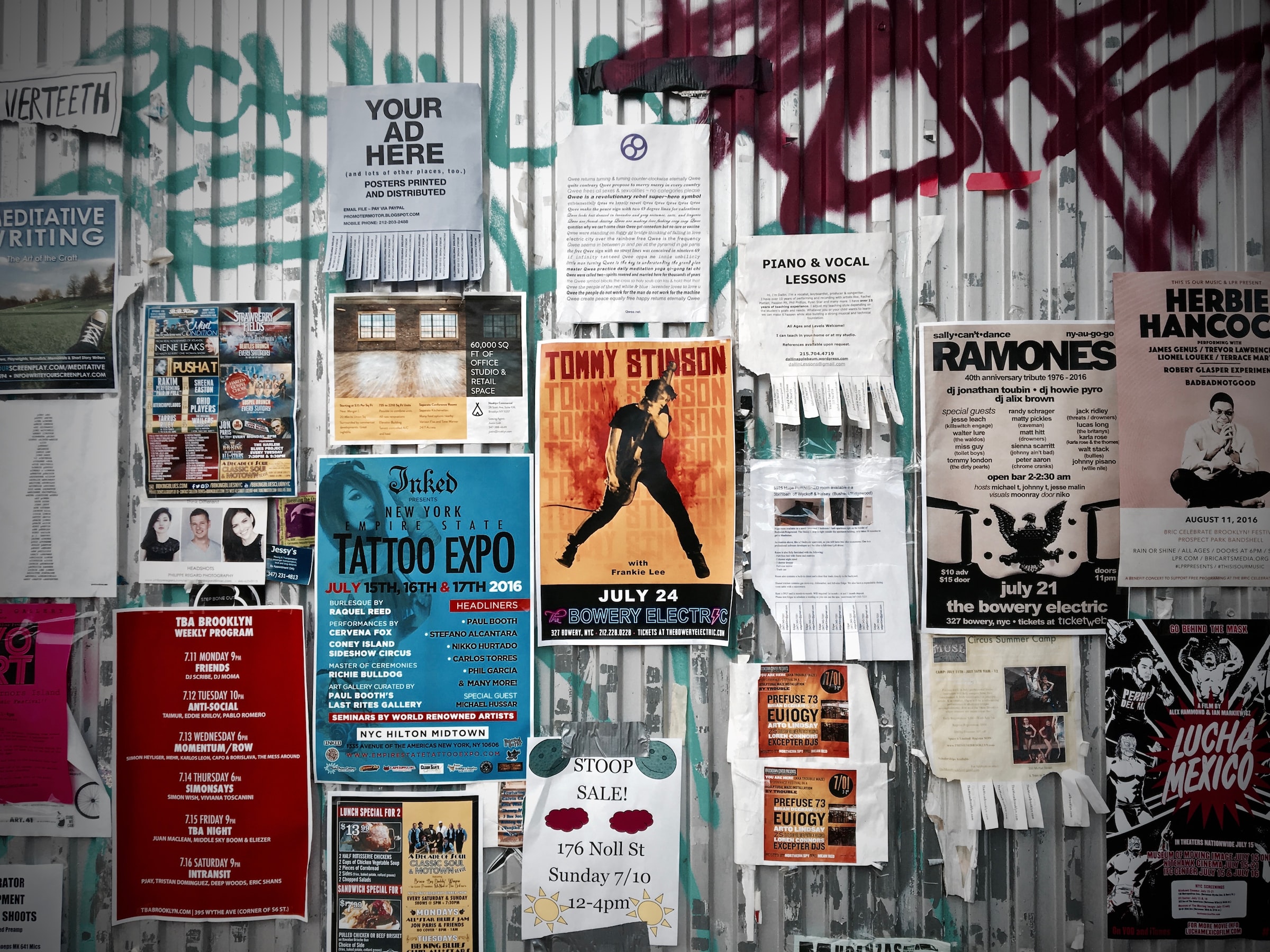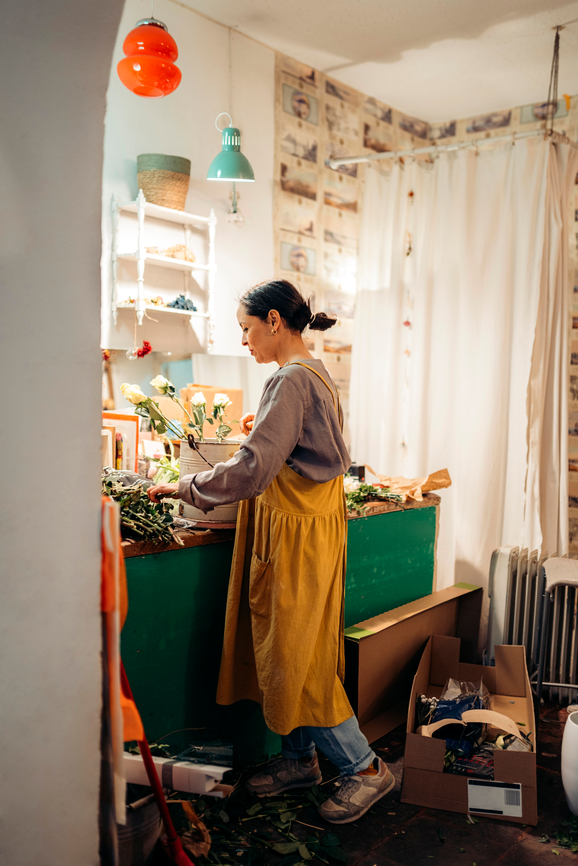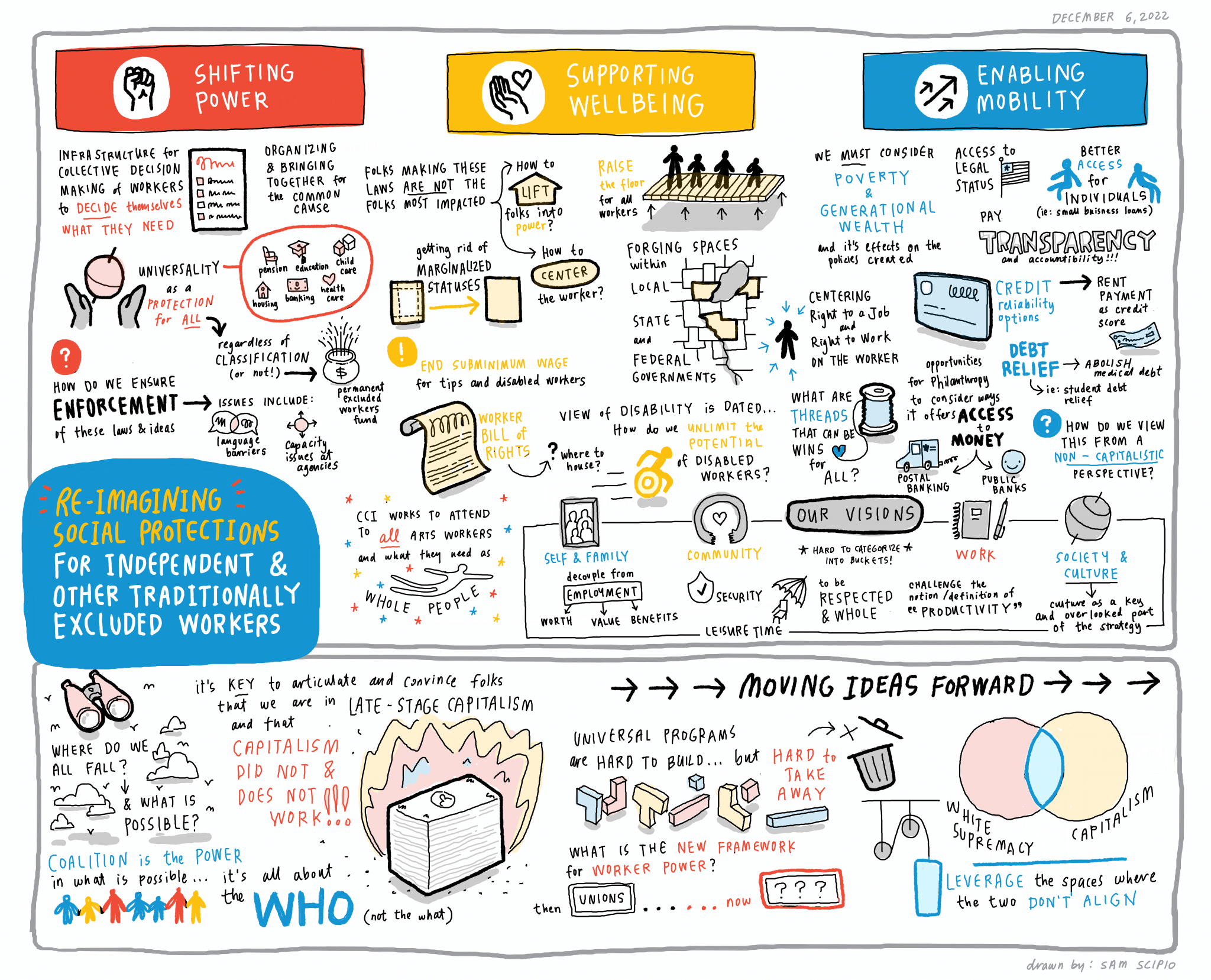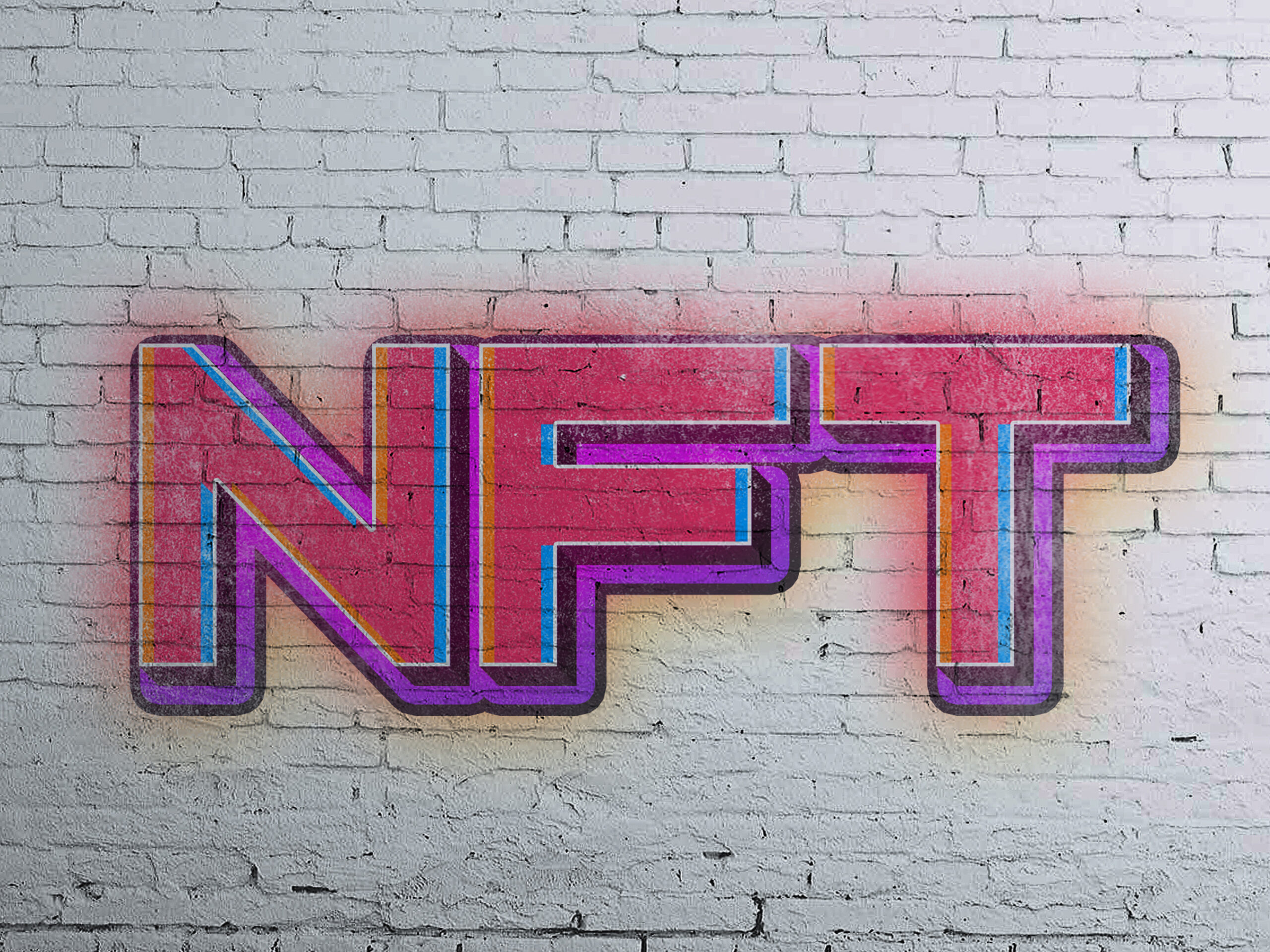Arts Worker Supports Issue Brief
Arts Worker Supports - Issue Brief
A summary of the public policies needed to build economic security for arts workers and microbusinesses
We worked with arts advocates to define a policy agenda that supports arts workers and microbusinesses.
In Spring/Summer of 2023, we worked with a voluntary group of arts worker advocates through the Cultural Advocacy Group to identify a set of policies needed to support the economic security of arts workers and microbusinesses. This issue brief is the result of our collective effort.
The brief summarizes the challenges people working in the arts face to access social protections, both as independent workers and microbusinesses, and outlines a series of policy reforms needed to build a safety net for all.
The brief is meant to be a resource for the field, so please feel free to use it in your own advocacy!
Imagining Social Protections for All
Imagining Social Protections for All
Bringing together worker advocates and movement leaders to imagine new systems of protection
Althea Erickson
Althea Erickson is the Director of the Sol Center for Liberated Work, a program of the Center for Cultural Innovation. Previously, Althea was the Vice President of Global Government Affairs and Impact at Etsy, and Advocacy & Policy Director at Freelancers Union.
Sometimes when we’re living inside a system, it’s hard to imagine what an alternative could look like.
In our desire to make progress–to improve the way things work–we focus on a tweak here, a shift in implementation there. And to some extent, that can be a good and pragmatic strategy. But it has its downsides.
When we seek to fix the systems we live in, we may unintentionally reinforce and entrench ones that simply don’t work, and worse, undermine our hope of achieving more. For example, the U.S. social safety net excludes huge swaths of workers–domestic workers, farm workers, self-employed workers, sex workers, and undocumented workers, just to name a few. Some of these groups were explicitly excluded to appease Southern segregationists, while others were merely overlooked due to the nature of the economy at the time. To date, much of the effort to close those gaps has been to focused on expanding existing systems to new populations, for example including domestic workers in labor laws or excluded workers in unemployment insurance. But what if the 21st century work force simply doesn’t fit into 20th century systems?
What if we started fresh, and reimagined a set of social and economic protections that met the needs of today’s workforce, unencumbered by the past? And what if we started that conversation with the workers who have been erased from the conversation, yet are most excluded from today’s safety net? What types of protections might we imagine together? And wouldn’t that system be more likely to actually work for all?
Those questions underpinned Reimagining Social Protections for Independent and Other Traditionally Excluded Workers, a convening we co-hosted with the Urban Institute in December 2022. The convening brought together worker advocates representing nontraditional workers from across a wide swath of sectors–domestic workers, migrant workers, temp workers, street vendors, migrant workers, sex workers, and more. Together, we set aside the constraints of today’s systems, and gave ourselves permission to imagine an alternative vision of economic security for today’s workforce, to dream beyond barriers of all kinds.
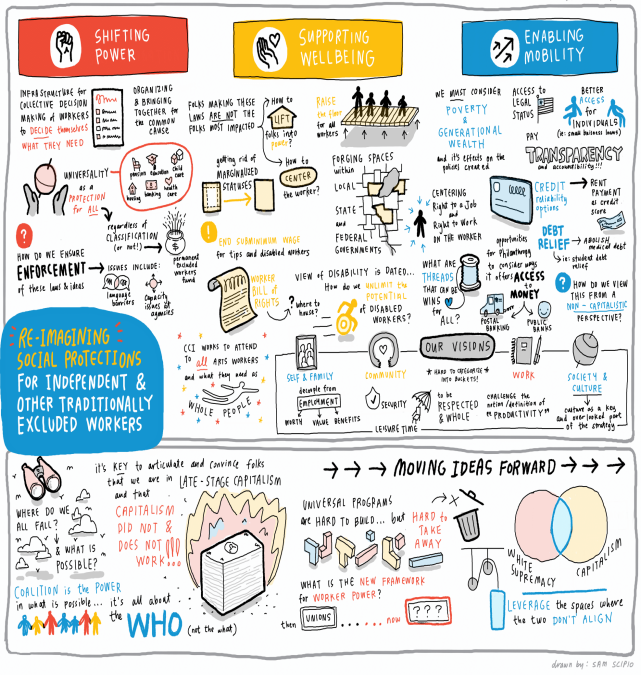
The ideas that garnered widespread support were pretty inspiring, and start to paint the picture, and the true possibility, of an alternative system of protections that isn’t contingent on your specific job or identity as a worker, but is guaranteed to you, as a human. In particular, attendees imagined:
- Widespread adoption of guaranteed income and other cash transfer programs that offer a floor of protections for all workers regardless of employment status
- Improvement of key social insurance programs, including healthcare, unemployment insurance, and retirement to make them affordable, portable, and universally available to everyone, regardless of their employment status
- The establishment of a national worker bill of rights that would apply to all workers, regardless of sector, occupation, or employment status
- Robust enforcement of labor laws and worker protections across all sectors
- Exploration of new models for building and wielding collective power, like sectoral bargaining
Driving the discussion were some core ideas - and really cultural and narrative shifts – that we, as a society, need to grapple with.
- We need to decouple work from worth.
- All people deserve dignity.
- We are full humans deserving support, not just in the narrow confines of our identities as workers.
- Our labor is more than the labor we do to earn income. It is the labor we do to support our families, to strengthen our communities, and to express ourselves that makes life worth living.
- A just society recognizes the value of people as humans, and builds systems to support broader human flourishing.
As inspiring as the visioning was, at times participants raised the challenges that stand in the way of moving from the systems we have to the systems we want, especially given the current political forces shaping policy today. And yet, there was palpable energy in the room around building greater connectivity and connection across these groups, to build greater collective power between and among nontraditional workers across sectors.
Yes, the challenges are great, but if we can align ourselves around a shared vision, we can start to build bridges to get from here to there.
You can read the full summary of the convening here. We, of course, welcome your voice in this ongoing conversation.
Convening Summary: Reimagining Social Protections For All
Convening Summary: Reimagining Social Protections For All
A Summary of the Virtual Convening on Reimagining Social Protections for Independent and Other Traditionally Excluded Workers
This December 2022 convening brought worker advocates and movement leaders together to reimagine social protections for all.
This summary describes the discussions at a virtual convening titled “Reimagining Social Protections for Independent and Other Traditionally Excluded Workers” and includes an artist's live visual notes taken during the event. We collaborated with the Urban Institute to host this convening in December 2022.
During this event, worker advocates, forward thinkers, and movement leaders imagined new systems of worker supports, protections, and power for those excluded from existing benefits and social protections, including independent contractors, temp workers, and workers in the arts.
Advocating for artists on the blockchain
Advocating for artists on the blockchain
Althea Erickson
Althea Erickson is the Director of the Sol Center for Liberated Work, a program of the Center for Cultural Innovation. Previously, Althea was the Vice President of Global Government Affairs and Impact at Etsy, and Advocacy & Policy Director at Freelancers Union.
Artists’ economic security depends on their ability to own and control their intellectual property rights, but they often lack the means or bargaining power to protect those rights.
For example, musicians often forgo rights to their work when signing record deals, while freelance writers must often sign contracts that give publishers full rights to their work in all forms in perpetuity. Unlike in many other countries, US visual artists don’t have a means to collect resale royalties on their work, even as those pieces grow in value over time.
The blockchain offers exciting opportunities for artists to take more control over their work, and expands ways for them to earn income from that work. It allows for more direct connection between artists and their fans, circumventing traditional gatekeepers. Through smart contracts and the metadata associated with NFTs, artists can set and enforce the terms of their license agreements in their work, including enabling many to collect resale royalties for the first time.
Given the opportunities and lack of traditional gatekeepers, it’s not surprising that many Black and Brown artists and creatives moved quickly into the space. Black individuals have been at the forefront of participating, legitimizing, and shaping the development of blockchain-based financial markets, activities, community forums, and art. We follow the artists we serve where they go, which is why we started exploring and learning about the web3 space.

We quickly learned that while the opportunities are significant, so are the risks, especially when it comes to artists protecting themselves and their work. In particular, the platforms themselves have significant power to set and enforce terms, limiting the promise of true self-determination for creatives.
To truly capture the ownership opportunities the blockchain offers, artists moving into the space need tools and information to help them set and enforce their rights. That’s why we commissioned Alex Glancy at the law firm Gundzik Gundzik Heeger LLP to write a report on the legal issues artists face on the blockchain (report forthcoming).
Given our interest in the issue, we were excited to learn in late 2022 that the U.S. government had undertaken a study into the issues surrounding intellectual property and NFTs. Policymakers are exploring whether current intellectual property laws need to be updated or changed, given the new technology. The U.S. Senate Subcommittee on Intellectual Property requested that the US Copyright Office and US Patent and Trademark Office undertake a joint study exploring intellectual property issues and NFTs. As part of that study, the Offices requested written comments, as well as hosted several public roundtables on the topic.
We worked with other stakeholders from the arts community to collect feedback on the issues artists and creatives face in the NFT space, and collaborated with Alex to develop comments to the USPTO/USCO study. We also participated in one of the public roundtables the Copyright Office organized, advocating on behalf of the creatives CCI serves, especially those from marginalized communities. You can read our submission here, and watch the roundtable here.
In advocating for the arts workers and creatives we serve, we made four major points:
- Artists need better tools to understand and influence the ways NFT marketplace terms impact their intellectual property rights, including the ability to assess terms, determine licenses, as well as choose or change platforms
- There is significant legal uncertainty regarding the ways copyright law and contract law overlap on the blockchain, which creates copyright management and enforcement challenges for creators and inconsistencies in enforcement
- As is the case off the blockchain, small creators need education and technical assistance to help them protect and manage their intellectual property on the blockchain, in particular given the high barriers to informed entry in the market and the lack of trusted advisors, especially within marginalized communities
- While the blockchain offers ways small creators can support themselves via direct payments and resale royalties, we worry about their overdependence on too-few platforms that could potentially use their market power to strip artists of ownership of artwork, rights to reproduce, trademark, and other economic opportunities.
Yes, we’re excited about the opportunities blockchain technologies offer for arts workers to control and derive economic benefits from their work. However, lack of information, tools, support and means to exert collective power may undermine the potential of these technologies to help creators – especially creators from marginalized communities – achieve greater self-determination.
Contributing to this public study was just the first step we’re taking to advocate for artists' ownership rights in this space. In the days to come, we’ll be publishing the report drafted by Alex Glancy on legal issues artists face on the blockchain, sharing artists' experiences and challenges with lawmakers, and continuing to collaborate with our peers to uplift their voices in the public debate.
Have a story to share about your experience using blockchain technologies? We’d love to hear it here!
Opportunities and challenges of NFTs
Opportunities and challenges of NFTs
Can arts workers use blockchain technologies to build economic power?
We’re excited about the opportunities blockchain technologies offer for arts workers to control and derive economic benefits from their work. However, lack of information, tools, and means to exert collective power may undermine the potential of these technologies to deliver greater self-determination to creators, especially those from marginalized communities.
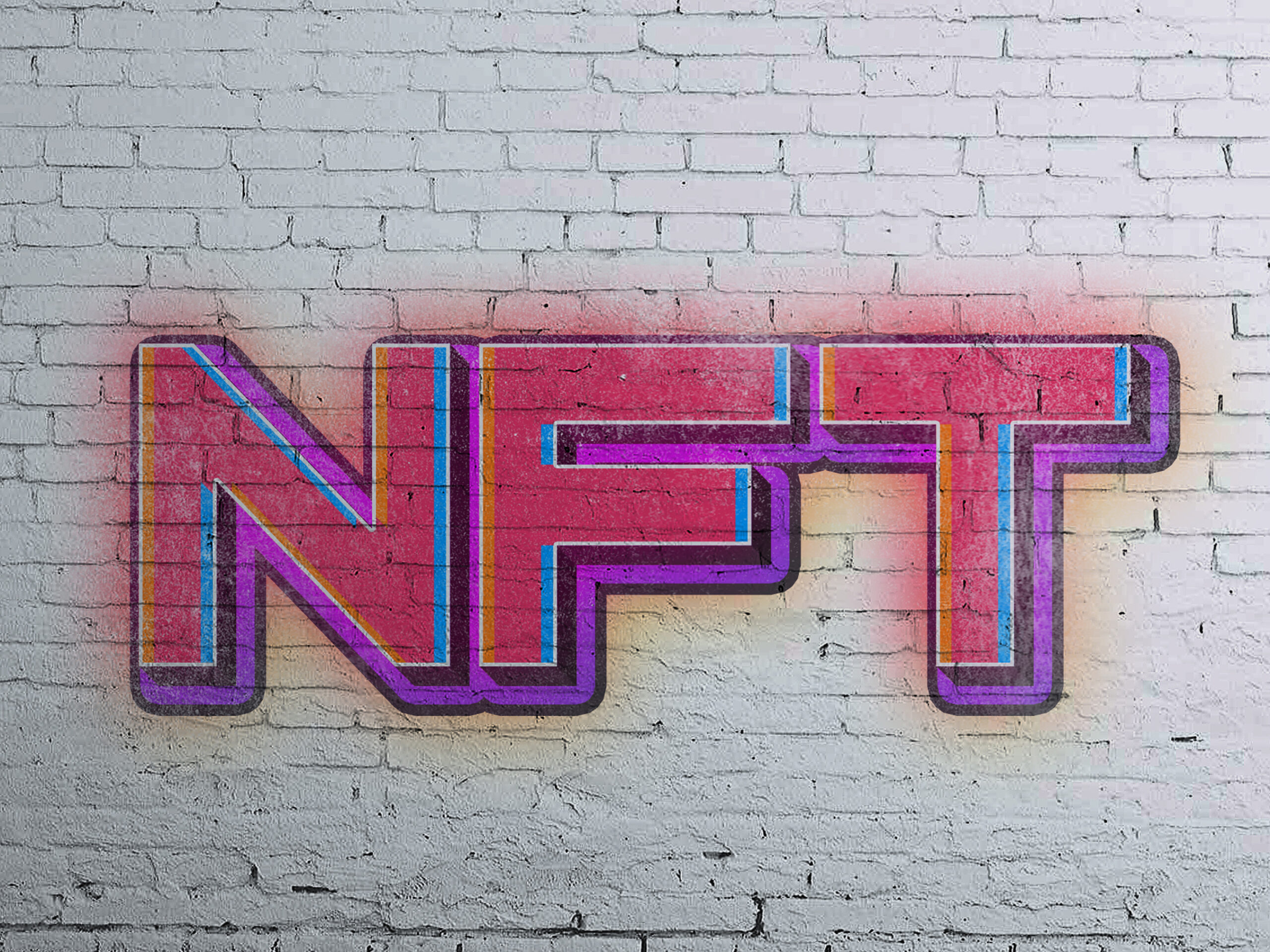
We’re in the early stages of advocating for artists' ownership rights in this space. We want to make sure that advocacy is rooted in the lived experiences of artists working in this space. Have a blockchain technology experience story to share? We’d love to hear it here!
Share your NFT story
Thank you so much for sharing your story! We will use these examples to shape our advocacy on this topic, and may reach out to you for more information, or to let you know about opportunities to advance social and economic protections for all.
All workers should have wage and hour protections
All workers should have wage and hour protections
Althea Erickson
Althea Erickson is the Director of the Sol Center for Liberated Work, a program of the Center for Cultural Innovation. Previously, Althea was the Vice President of Global Government Affairs and Impact at Etsy, and Advocacy & Policy Director at Freelancers Union.
The recent political fights over misclassification–whether a worker should be classified as an employee or independent contractor–have been fierce, and a major priority of the labor movement.
Labor leaders often argue that the best way to protect all workers is to classify them as employees, while their antagonists–companies that rely on contract labor–often tout workers' desire for flexibility and independence without acknowledging their twin need for security and protections. As the public debate has become more polarized between these two positions, true independent workers–those who are not misclassified–are often overlooked.
Many arts workers fall into this middle category, and found themselves caught up in the debate around AB-5 in California, which established a much more stringent “ABC test” for determining whether a worker should be classified as an employee or an independent contractor, changing many arts workers from independent contractors into employees overnight. At the time, we commissioned the Urban Institute to publish an analysis of the proposed classification law on arts workers. Lawmakers in California are still sorting out the details of implementation, first through A.B. 2257, which exempted many arts professions from the law altogether, and more recently through S.B. 1116, which seeks to support nonprofit arts institutions' capacity to comply with the law. Other states are considering similar legislation, but the topic remains fraught.
The federal government is also looking at the issue of classification. In August 2022, the Department of Labor put out a request for comments on its new proposed classification rule. Though the proposed rule didn’t mark a meaningful departure from the status quo (it rolls back a Trump era rule that was put into place during the waning days of that administration), the open comment period felt like an important opportunity to uplift the experiences of arts workers and others working in the gig economy who may be rightly classified, but lack worker protections under labor laws.
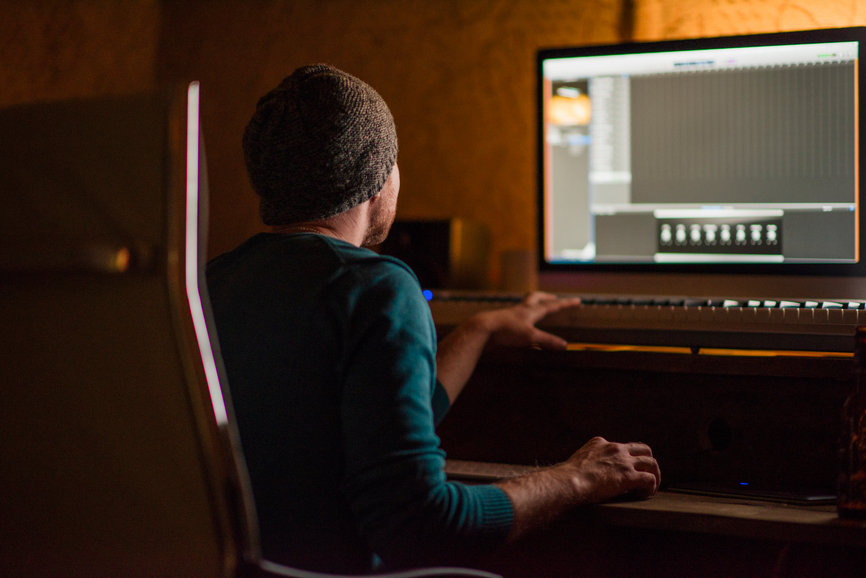
We worked with allies in the arts to solicit feedback about arts workers' experiences, and heard about frustrations some creatives feel having to choose between security and flexibility, as well as common challenges bargaining for fair pay, given that independent contractors are not allowed to collectively bargain under the law.
Ultimately, we submitted these comments to the Department of Labor, which broadly supported the new rule because it enables more flexibility than the ABC test to determine a worker's classification, ensuring that those who are misclassified can get reclassified, while also allowing courts to consider the more nuanced circumstances many arts workers operate under. We also made the broader point that all workers, regardless of their classification, deserve wage protections and the right to collectively bargain.
Current law makes it difficult for independent contractors to collectively negotiate wage and hour standards and protections. We believe this could be rectified through several reforms, including allowing independent contractors to form unions under the National Labor Relations Act (NLRA), allowing secondary boycotts under the NLRA, clarifying that independent contractors may set industry wage standards and overtime protections without violating antitrust law, and enabling sectoral bargaining models that include independent contractors.
It bears mentioning that the issue of classification is tantamount to worker protection because we have, as a society, tied so many protections to employment. While proper classification of workers is one path to ensuring worker protections, it is not, and cannot, be the only path to ensuring that all workers have the social and economic protections that they deserve.
We believe that arts workers–and other gig workers who share their precarity–should not have to choose between the security and protections currently tied to full-time employment, and the flexibility, independence, and ownership rights that come with independence. As a society, we should guarantee flexibility AND security to all workers, regardless of their employment status.
